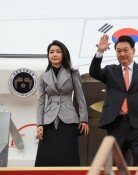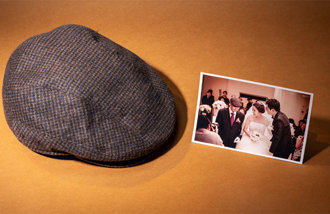Fake Chinese Auto Parts Flooding Korea
Fake Chinese Auto Parts Flooding Korea
Posted October. 18, 2005 06:51,
Fake automotive parts smuggled from China are posing a serious threat to the Korean market.
Until recently, major automakers, such as Hyundai and Kia Motors, were the main brands that fake parts makers plagiarized the most. But now even forgeries of parts from independent contractors have been distributed, complete with fake logos.
Contractors have tried to stop these fakes on their own, but the amount has become too overwhelming for them to stop. The Korean automobile industry is being threatened, and many say that the situation is serious because the parts are a grave danger to driver safety.
Smuggled turbo parts
Honeywell Korea, a manufacturer of turbo parts, recently found 10 Chinese imitations of its turbo brand, Garrett, available on the market, and began an investigation into how those imitations were distributed. The company plans to bring this case and its seller to the police.
Turbo parts are essential car tuning parts, which means a mass distribution of faked turbo parts could increase the possibility of automobile accidents. Faked turbo parts are sloppily manufactured, and its quality of the material used is very low as well, which is dangerous, said a Honeywell Korea spokesperson.
The largest victim of fake automotive parts made in China is Hyundai Mobis, a major supplier of Hyundai and Kia Motors parts.
Hyundai Mobis discovered 21.8 billion won worth of faked parts over the past three years from 2002. This year alone, Hyundai Mobis conducted 18 investigations and found 2.9 billion won worth of Chinese faked parts in the Korean market.
4.9 Billion won in fake auto parts
This year alone, the Korean Customs Service intercepted 4.9 billion won worth of Chinese fake automotive parts being imported into Korea without origin marks.
The kinds of faked parts are varied, ranging from components, such as brake pads and clutches, to interior parts, such as bumpers for the EF Sonata.
Fakes are hard to find in the case of complicated parts, but China has manufactured many small and rather simple accessories with similar shapes and logos, an person concerned said.
Last August, an illegal manufacturing plant was discovered in Guangzhou, where 2,000 forged brake pads and 17,000 fake Hyundai and Kia Motors logos were found.
Even appearances are copied
Chinese automakers have even copied the external appearance of many Korean cars. The Chinese automaker Chery manufactures the QQ model, which has almost the same exterior design of the Matiz by GM Daewoo Motors, and a lawsuit is in progress. The design was so similar that some even say that the car doors of the Matiz might even fit the QQ.
Ssangyong Motor is also troubled by Shuguang Autos Aurong, which is very much like Ssangyongs New Rexton model. Another Chinese automaker, Dongfeng Motor Corp, released a car named A Small Prince, which is also a copy of Hyundais Accent with the headlamps of Hyundais Avante. It can be said that all these were caused by the increasing popularity of Korean vehicles.
Under circumstances like these, fake automotive parts for Korean automobiles that had been distributed inside the Chinese market, are now making inroads into the Korean market. These faked parts made in China are even exported to South East Asia or Middle East where many Korean used cars have been exported.
The industry came up with its own investigation team to fight this problem, but there are limitations on what it handle all by itself. The Korean government should take necessary actions immediately, said a person concerned.
Jang Yoon-gyeong, director of Hyundai Mobis, said that drivers must make sure that automotive parts they buy are genuine products that have a certificate of inspection and the Hyundai Mobis hologram when they buy auto parts from stores. This is one way to stop the distribution of fake products.
Sung-Won Joo swon@donga.com aryssong@donga.com







